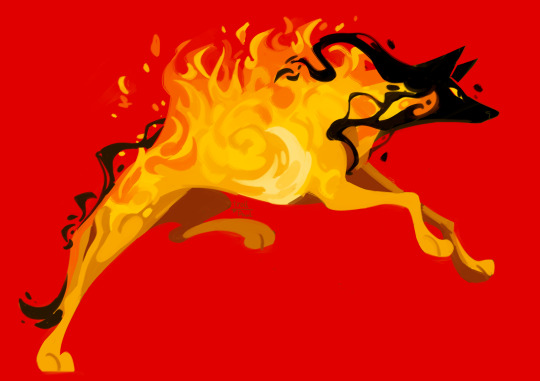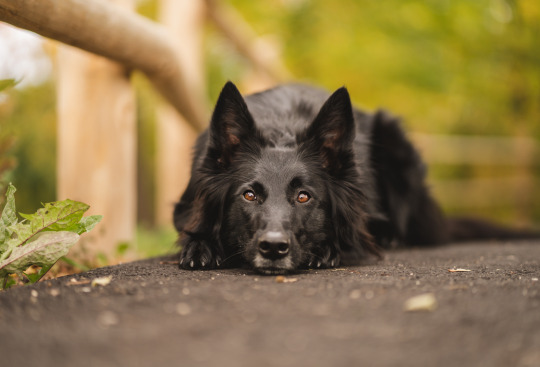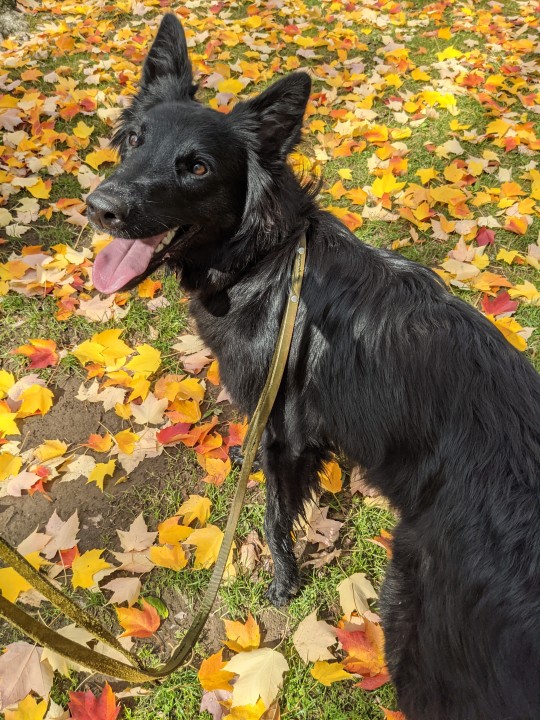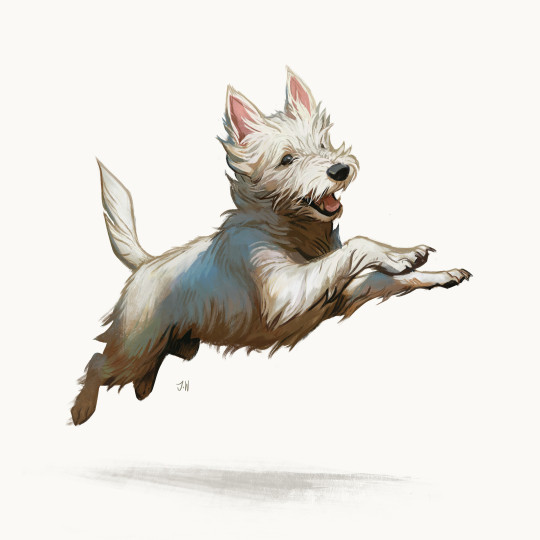Text
A reminder that if you see a dog trainer online who claims that “positive reinforcement failed this dog” in regards to a reactive dog and then they proceed to show you how they were able to “fix” the dog’s reactivity with aversive training that:
- you don’t know how much time and effort was put towards counter conditioning the dog with positive reinforcement. Positive reinforcement counter condition to reactivity triggers takes a LONG TIME and many casual dog owners simply do not put in the work and want results ~now~.
- you don’t see the “fixed” reactive dog outside of videos in very controlled environments. The dog may still react when placed in the hands of others because the dog may be behaviorally shut down by the aversive trainer and trying to not endure any more pain then necessary. This does not “fix” reactivity. The things that trigger the dog to react still exist as a negative to trigger the dog.
- dog training is NOT a quick fix. All good dog training takes time, patience and effort. A single board and train will not fix your dog. A single class will not fix your dog. A single trainer will not fix your dog unless the work is being put in to reducing the dog’s stress and their ability to succeed EVERY. SINGLE. DAY.
573 notes
·
View notes
Link
Good morning and welcome to another round of one of our favorite games on this blog: Does This Legislation Actually Do What It Says It Does?
This time, the topic is proposed regulation for dog trainers! Spoiler: no, no it does not, and that is a huge problem. If you live in the United States and are a dog trainer, know someone who is a dog trainer, or hire dog trainers, this is something you’re going to want to be aware of.
On November 15th, 2021, a new group called the Alliance for Professionalism in Dog Training (AFPIDT) was announced, along with draft “model legislation” for the creation of state-level licensing programs for dog trainers. It is a collaboration between the Certification Council for Professional Dog Trainers (CCPDT) and the Alliance for Professional Dog Trainers (APDT), and their goal is to “give a voice to dog training professionals – and those we serve – before others with less understanding of the industry speak in our stead.” Proactively pursuing licensure and regulation for dog trainers is the first step they are choosing to take in that direction. The model legislation that they hope to present to state legislators in the future is now at a point where they decided it was appropriate to publish it and request member review and feedback.
Unfortunately, the model legislation AFPIDT has put forward has serious problems. It’s badly written, in the sense that crucial terminology is left ambiguous throughout and there’s at least one entirely missing section - it also contains a lot of more fundamental issues that should have been identified and rectified before it was ever floated publicly for member input. The proposed regulations create an unfair financial advantage for a small number of industry trade associations; it encourages a discriminatory and inequitable licensing system by allowing the government to adjudicate a dog trainer’s physical and mental health, behavior outside of work, and “moral character.”; the penalty section is written in a way that that appears to violate the right to due process by imprisoning trainers who operate without a license without even defining that as a criminal act. If implemented as written, AFPIDT’s model legislation would not create a fair, balanced, or even functional system of licensure - much less fulfill their stated goal of protecting animals and their owners from improper practices.
I don’t think that licensure is an inappropriate direction for industries dealing with both animal welfare and consumer service, but I am passionate about the fact that it has to be done right the first time. Laws that impact animal welfare and the livelihoods of large numbers of professionals must be meticulously written to ensure precise results. AFPIDT’s proposed model legislation for licensing dog trainers does not fulfill that criterion.
While it’s true that the current version of the model legislation is still a draft, it was considered complete enough to be shared publicly online - rather than disseminated internally - and therefore should be critiqued as representative of what the organizations involved think is appropriate to promote under their brand.
As I am a member of one of the organizations involved in AFPIDT, I have done what I always do with animal-related bills: interrogate the text of the model legislation and create an exhaustive writeup regarding my conclusions. After submitting it to AFPIDT as formal feedback, I’ve chosen to also put it online. Other dog trainers have noted they’re upset by the proposal, and I wanted to contribute my work to the public discussion to a) increase the available information to further discussion around it and b) provide some language other people can use when crafting their own feedback.
For ease of sharing on social media, I put the whole analysis into the Medium post linked above - there’s also a PDF of it here. Fair warning - it’s a long read. The model legislation itself is 2800 words, and even being as concise as possible, it took me just under 8500 to cover all the the problems I identified. Want a fast synopsis? The first page of that PDF is fact sheet that covers the gist of things.
Right now, AFPIDT has only requested feedback from their members, but I think it’s important for everyone who cares about the industry to be aware of what’s going on, because it’s much easier to edit legislation before it is formally filed.
898 notes
·
View notes
Text
I really don't have good words for this but I get a lot of messages and asks etc that boil down to "my teenage puppy dog isn't behaving like a 3 yr old and I'm worried they'll be this way forever."
Your 7 month old is a teenage puppy
Your 1 yr old is a teenage puppy
Depends on the dog but often your 20 month old is a teenage puppy
Even past for some though I haven't experienced that yet
And teenage dogs are harder than anything any trainer has worked in an equivalent adult dog lmao! Their brains straight up aren't doing adult dog things. They're sorting and working it all out
Please, please do not expect fully adult behavior out of a teenage dog. Don't take one or even three experiences as How The Dog Is. Patience, patience, time and rewards for what it is you do want them to do. And time. Please
#Igni is 26 months now#and she has a great deal of maturing to do#the first thing people ask about her is if she's a puppy#(she is TINY so that might factor into that)#but even people who don't know the breed#or anything about dogs in general#keep asking if she's a puppy
380 notes
·
View notes
Text

This is a truly fantastic article about the difficulties facing vet medicine right now.
The struggles facing animal care aren’t as simple as the oft-cited one of more pets, fewer staff. Experts say several factors are at play, with some a long time coming and others caused or exacerbated by the pandemic.
I'd also like to point out, along with the verbal abuse, high turnover rates for vet techs, and high debt for veterinarians, etc mentioned, there is an extremely high suicide rate for vets AND vet techs (techs are often not mentioned in these statistics and the below mentioned 2019 study was the first to even consider suicide rates in techs).
The study found that female veterinarians were 2.4 times as likely as the general U.S. population to commit suicide and that the rate for male veterinary technicians was five times higher. Among male veterinarians and female veterinary technicians, the rates were 1.6 and 2.3 times greater, respectively. This is the first study that also considered suicide rates among veterinary technicians.
Washington is in a particularly bad spot as far as veterinary medicine goes, but even before COVID, veterinary medicine staff have been struggling for a long time to survive and make ends meet. There's little people outside of vet med can do, but do what you can.
Be kind, be patient, and try to plan ahead. Make appointments early for wellness/vaccines and make appointments when problems first come up rather than a week into them when it can no longer wait. It's much easier to cancel an appointment than figure out how to work one in on a Saturday when that schedule was full 2 weeks ago.
We know you're stressed about your babies and finances and everything else that comes up with emergency situations, but I promise, those of us in vet med are trying our absolute best. ❤️
1K notes
·
View notes
Text
Stress signals in dogs...and why they are important!!
I was watching a video the other day of a service dog in training. He was heeling beautifully beside his handler in a department store, sitting on command, performing a long distance down stay, and just being a really good dog. The handler wrote a short bit about how proud she was for how well her puppy was doing with his public access training. However, my heart truly breaks for this dog.
What the handler failed to realize is how completely uncomfortable her dog was to be there. Despite him behaving near flawlessly, his body language was screaming he’d rather be anywhere but where he was right then. Unfortunately many dog owners fail to notice subtle, yet key, signs of stress for their dog. Without knowing how to read subtle changes in body language, you can easily cause your dog to go from mildly nervous or uncomfortable, to a full on panic or rage in a matter of seconds. This is what happens when people say their dog “just had a meltdown,” or even snapped at someone, for “no reason.” Ignoring stress signals is incredibly dangerous for everyone involved.
When out training with your service dog (or your pet dog for that matter), it is important to get into the habit of carefully watching your dog’s body language. It helps to write down in a training log exactly how your dog reacts to different stimuli. This way, you will be able to clearly see where your dog is solid, where your dog is not, where you are improving, and where you need more work.
Below are signs of minor stress signals for dogs.
When I say minor, this doesn’t mean you should continue what you are doing in hopes he will just “get over it.” What I DO mean is that these are the signals which are almost always overlooked… when key stress signals are overlooked by the handler, it can lead to much greater problems.
Lip licking when no food is present
Yawning when he didn’t just wake up
Rapid sniffing of the air or ground
Stiff movement or tense muscles
Slowed movement or a laggy heel
Lowered tail
Hyper vigilance (rapidly moving eyes trying to scan the environment)
Hardened facial features
Dog stops taking treats/food
Dog starts taking treats in a more hard/bitey manor
Hard eyes (fast/sharp blinking)
Weight shift changes
Panting when it’s not hot out
Slightly roached (curved) back
Ears back
Not responding to handler’s commands
Looking away from handler
Whiney and uneasy
Nibbling on treats but not actually eating them
Leaning on the handler
Scratching themselves
Now here are some major stress signals for dogs.
If your dog is experiencing any of these, it is not only time to remove him from the situation ASAP, but to also rethink your training plan. Many of these signals will occur just shortly before a complete panic and/or bite.
Tightly tucked tail
Whale eye (dog’s eyes go wide and you can see the white rim around them)
Pulling towards an exit
Pulling away from the handler
Spinning on the leash
Not responding to the handler’s commands
Not responding to the handler’s voice
Shaking
Urinating
Low/tucked body position with a roached (curved) back
Sweaty paws
Whining
Heavy breathing when it’s not hot out
Teeth chattering
Tense lips and incisors (front teeth) showing while licking at the air
Laying down on the ground with their chin down and not wanting to move
Your service dog depends on you JUST as much as you depend on him. As your dog’s handler, you are 100% responsible for his mental and physical well-being at all times. No matter what situation you find yourself in, your dog’s needs should always come first.
Pushing a nervous dog into a situation where he is uncomfortable is one of the absolute worst things you can do for your SDiT, and creates the potential for much greater behavioral issues further down the road. Thinking your dog can “just get over it” is an extremely outdated training tactic. Just because your dog appears to stop fighting does NOT mean he is comfortable in that situation… it simply means he has shut down. He’s still anxious and afraid, but he’s decided there’s no point in fighting anymore. This is one of the most dangerous situations your dog may find himself in. He appears “calm,” but a second later has the potential to lash out and bite.
I get it, we are all excited to start public access training! However, the goal for service dog training should always be to create a mentally sound and stable dog in all situations. Subjecting him to situations which cause him fear or panic is just NOT the way to do that.
4K notes
·
View notes
Text
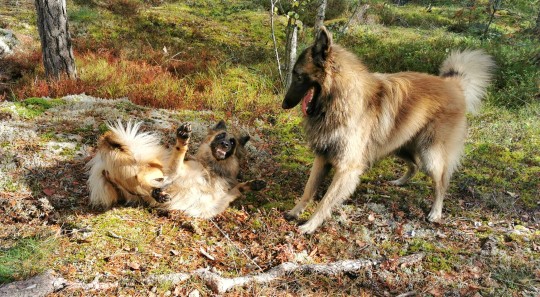
like brother like sister
#Igni#and Igni's brother Dexi#Dexi spent couple of months with us#he was delightfully dumb <3#I kinda disappeared from here for quite a while#not sure how active I'm gonna be now#we'll see I guess#belgian tervuren#belgian shepherd#tervueren#dogs
69 notes
·
View notes
Photo
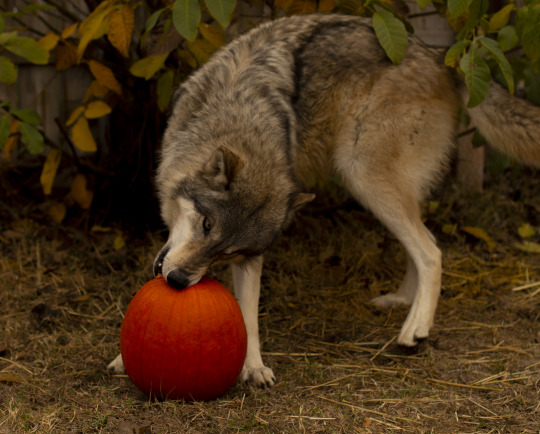



The dogs got some pumpkins today. I generally cut a little hole near the bottom and stuff some chicken or beef inside to make them extra exciting :)
115 notes
·
View notes
Video
blahblahblah
(via)
46K notes
·
View notes
Text
I really do think the way some folks talk about working herding breed dogs crosses over into the way people think all working bred dogs are like.
Good working drive in many breeds is calm, unchaotic, able to settle. Not to paint too rosy of a picture (I try not to I hope you all see that) but good sled dogs need to be able to settle in a sled bag or settle when you stop on the trail, good hunting dogs need to work in a calm, focused manner and even wait in hides for hours on end before they get to do anything. Good service dogs need to be calm and focused to complete their task.
The way we talk about drive to work is so skewed because of the way people talk about working herding breeds that I think many of us fail to remember that not every dog breed’s ideal working self is a quivering bundle of excess energy that needs a lot of mental stimulation. It’s just more nuanced than that.
493 notes
·
View notes
